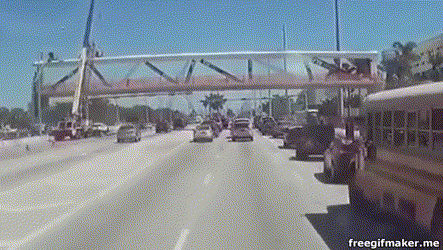This is a message that I got in my email:
"Engineer on Florida bridge project called state two days before deadly collapse to report crack
The Florida Department of Transportation on Friday night released the transcript of a call from an engineer with FIGG Bridge Engineers that the agency got Tuesday. “Calling to, uh, share with you some information about the FIU pedestrian bridge and some cracking that’s been observed on the north end of the span.” The message was left on a land line and not retrieved until Friday."
I’ll speculate that state employees check their voicemail differently than those in the private sector. Message left on Tuesday isn’t retrieved until Friday. That won’t fly in my world. Wish it would, but it won’t. Oh well, sovereign immunity will cover all of the state agencies and employees. Sad story.

